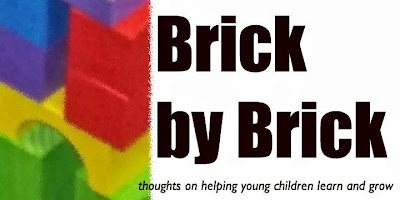Chapter 26: No More "Good Job!"
This chapter, more than others, seems to hit right in the middle of a lot of early childhood teachers. In reading the other chapters, I often think about "those" people who are not around young kids much, making decisions without knowing a lot about early child development.
But this chapter speaks to the everyday preschool teacher, at least many of them.
Rae writes about the automatic response of adults to young kids, when anything happens in the room: "Good job!" The motivation is sincere and good-intentioned; they want to encourage the children and give some positive feedback. But is this really feedback? What are we telling the kids? What did they do that is good? What does good mean? Why was it good? This phrase is not very informative.
And if it is repeatedly said, for no reason other than the child did something (anything), then it isn't very encouraging either. In fact, if kids continue to hear it over and over, they begin to ignore it entirely. And encouraging kids to ignore what I say isn't really what I want to teach.
I've worked hard to try and eliminate this auto-response from my interactions with kids. If it does come out of my mouth, and it still does sometimes, I try to follow it up with a factual statement. "You balanced that larger block on top of the smaller one. That can be difficult to do."
Mostly I just state what I see: "You covered all your paper with the blue paint." This usually leads to the child talking about his painting, telling me what he did to make it or why he covered the whole paper. If not, he will nod at my comment and we both move on. Ellen Ava Sigler, quoted in this chapter, says: "Simply acknowledging a child's work or talking to a child about what they're doing is positive reinforcement."
Another way to talk with kids about their work or their action is to ask questions or encourage discussion: "How did you do that?" "Tell me about this." "It looks like you drew with two markers at the same time. Is that what you did or did you do something else?" These types of statements and questions notice what the child has done and encourage him to talk about it. That can reinforce his work and develop his skills for thinking about what to do next.
I found Rae's comments at the end of the chapter interesting. This constant attempt at building self-esteem can result in kids who have a low tolerance for frustration or failure. Acknowledge when a child makes a mistake or when things don't work out just right. Encourage thinking about what to do instead or acknowledge effort. "You tried to make the blocks stand up but the building fell over. What else could you try?"
Yes we want to encourage kids and their efforts. But we want to communicate meaningfully and honestly. We want to help kids become resilient and self-motivated. Empty comments do little to further those goals.
Some links from the book---


